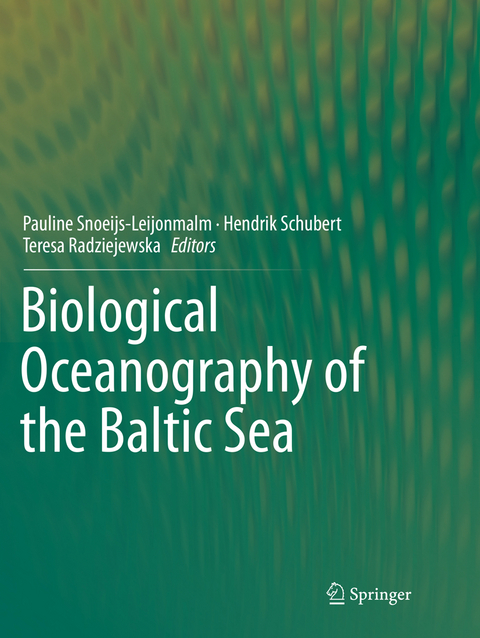
Biological Oceanography of the Baltic Sea
Springer (Verlag)
978-94-024-1317-5 (ISBN)
pt;font-family:"Arial","sans-serif"; color:#262626">The first part of the book presents the challenges for life processes and ecosystem dynamics that result from the Baltic Sea’s highly variable recent geological history and geographical isolation. The second part explains interactions between organisms and their environment, including biogeochemical cycles, patterns of biodiversity, genetic diversity and evolution, biological invasions and physiological adaptations. In the third part, the subsystems of the Baltic Sea ecosystem – the pelagic zone, the sea ice, the deep soft sea beds, the phytobenthic zone, the sandy coasts, and estuaries and coastal lagoons – are treated in detail with respect to the structure and function of communities and habitats and consequences of natural and anthropogenic constraints, such as climate change, discharges of nutrients and hazardous substances. Finally, the fourth part of the book discusses monitoring and ecosystem-based management to deal with contemporary and emerging threats to the ecosystem’s health.
Pauline Snoeijs is a professor in Pelagic Systems Ecology at the University of Stockholm. Her current research deals with the pelagic system of the brackish Baltic Sea and integrates ecology, ecophysiology and biochemistry.
PART I: The Baltic Sea environment.- Chapter 1: Brackish water as an environment.- Chapter 2: Why is the Baltic Sea so special to live in?.- PART II: Ecological processes in the Baltic Sea.- Chapter 3: Biogeochemical cycles.- Chapter 4: Patterns of biodiversity.- Chapter 5: Biological invasions.- Chapter 6: Genetic diversity and evolution.- Chapter 7: Physiological adaptations.- PART III: Subsystems of the Baltic Sea ecosystem.- Chapter 8: The pelagic food web.- Chapter 9: Life associated with Baltic Sea ice.- Chapter 10: Deep soft seabeds.- Chapter 11: The phytobenthic zone.- Chapter 12: Sandy coasts.- Chapter 13: Estuaries and coastal lagoons.- PART IV: Monitoring and ecosystem-based management of the Baltic Sea.- Chapter 14: Biological indicators.- Chapter 15: Bio-optical water quality assessment.- Chapter 16: Chemical pollution and ecotoxicology.- Chapter 17: Ecosystem health.- Chapter 18: Ecosystem goods, services and management.
| Erscheinungsdatum | 27.08.2018 |
|---|---|
| Zusatzinfo | 422 Illustrations, color; 8 Illustrations, black and white; XXXI, 683 p. 430 illus., 422 illus. in color. |
| Verlagsort | Dordrecht |
| Sprache | englisch |
| Maße | 210 x 279 mm |
| Themenwelt | Naturwissenschaften ► Biologie ► Ökologie / Naturschutz |
| Naturwissenschaften ► Geowissenschaften ► Hydrologie / Ozeanografie | |
| Schlagworte | Baltic Sea • biodiversity • Biology • Diversity • Ecology • Management |
| ISBN-10 | 94-024-1317-0 / 9402413170 |
| ISBN-13 | 978-94-024-1317-5 / 9789402413175 |
| Zustand | Neuware |
| Haben Sie eine Frage zum Produkt? |
aus dem Bereich


